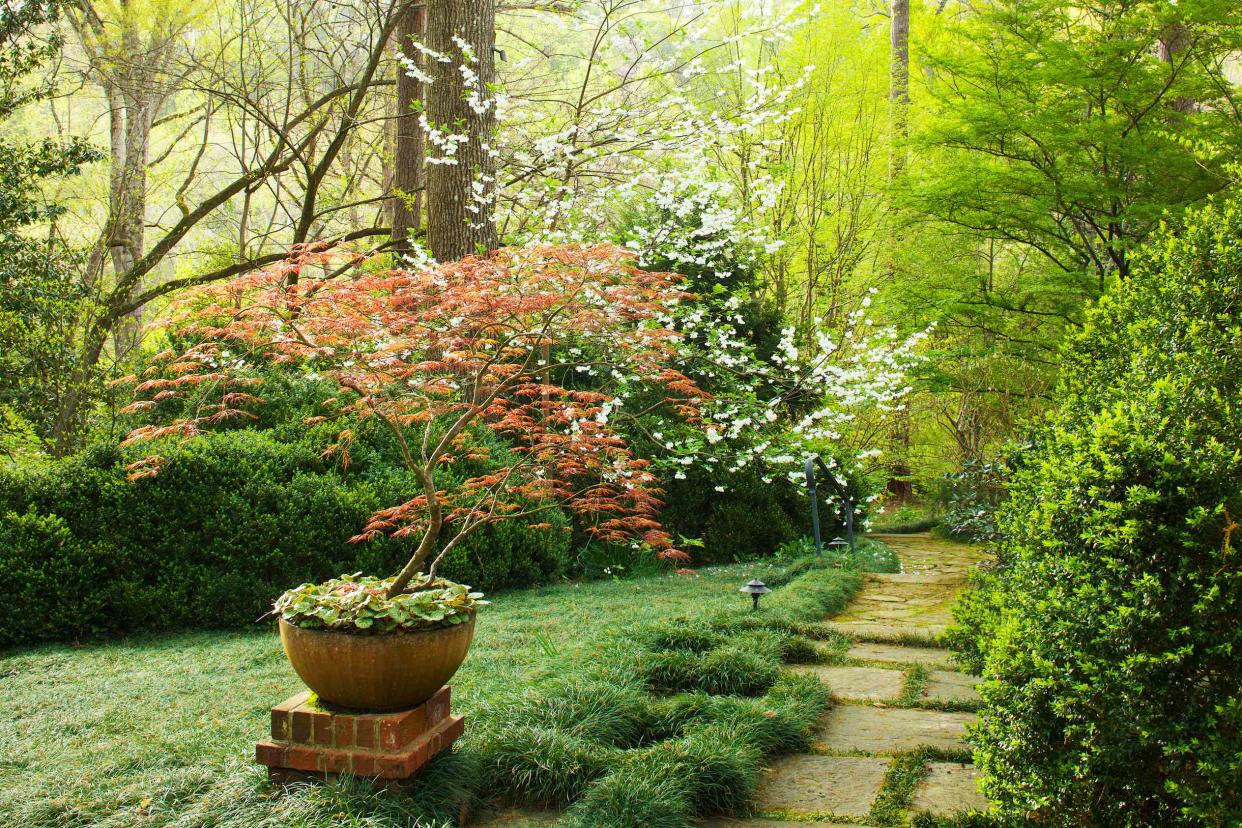The Grumpy Gardener's Favorite Garden In The World

The Garden Conservancy/Mick Hales
If you're going to write about Southern gardening, there is one place here that you simply
must see,” said former Southern Living Editor in Chief John Floyd. It was 1983, and he had brought me down from Maryland to Birmingham to be the magazine’s newest garden editor. “We’re going to visit Louise Wrinkle,” he said.
After her parents passed away, Louise had moved back to the house where she’d grown up in the nearby town of Mountain Brook. The stately home stood on a tree-shaded multi-acre lot and was purposefully sheltered from the street. You didn’t just stroll up three steps to the front door. Every visit demanded a journey.
Although the home had small gardens, the woods were left to grow as they would. Over time, invading briars, honeysuckle, and poison ivy had insinuated themselves into the equation. She dubbed it “The Jungle.” Thus, she had to remove these brigands to reveal smothered treasures before she could conceive what this area might become.
A formal design would not do here. She rejected the classic English, French, and Japanese styles because she says, “They impose patterns on the landscape. My idea was ‘Less is more.’ ” Nature must dictate the outcome. So she stood back and let the site speak softly to her. What did the land want? What did the trees, hillside, and brook desire? How could she capitalize on the lot’s contours and topography when introducing paths, steps, retaining walls, and viewing points? What new plants would add interest without disrupting harmony?
To crystallize her thoughts, she called on Birmingham landscape architect Norman Kent Johnson. Together, they crafted a Southern woodland featuring wildflowers, perennials, ground covers, bulbs, trees, and shrubs. It shows different faces and tugs at different emotions as the seasons pass. “Woodland gardening is about surprise,” notes Norman. “If it doesn’t change, something’s wrong.”
Related: 25 Easy Ground Covers To Grow In Full Sun Or Shade
Louise and I became plant buddies. She graciously allowed me to walk her paths without prior notice. I often took advantage during lunch hours. The magnificent sight of her native Piedmont azaleas (Rhododendron canescens) blooming each spring at the head of the drive is unforgettable, as is the fragrance of winter daphne (Daphneodora) in a planter near the house.
She loves native plants—her sweeps of blue phlox (Phlox divaricata) are to die for—but she’s not an ideologue and also employs exotics such as Alexandrian laurel (Danae racemosa), variegated fragrant Solomon’s seal (Polygonatum odoratum ‘Variegatum’), and Japanese maple (Acer palmatum) that play well with native species and accomplish the same goals.
Related: 20 Drought-Tolerant Native Plants For Southern Gardens
The best way for you to experience this extraordinary place is by ordering her beautiful book, Listen to the Land, available on Amazon or at the Birmingham Botanical Gardens. It chronicles about 30 years of failures and successes in fashioning an immersive woodland that benefits its site, its plants, and all those who encounter it.
Related: Visit The Birmingham Botanical Gardens To See An Impressive Collection Of Roses
For more Southern Living news, make sure to sign up for our newsletter!
Read the original article on Southern Living.

